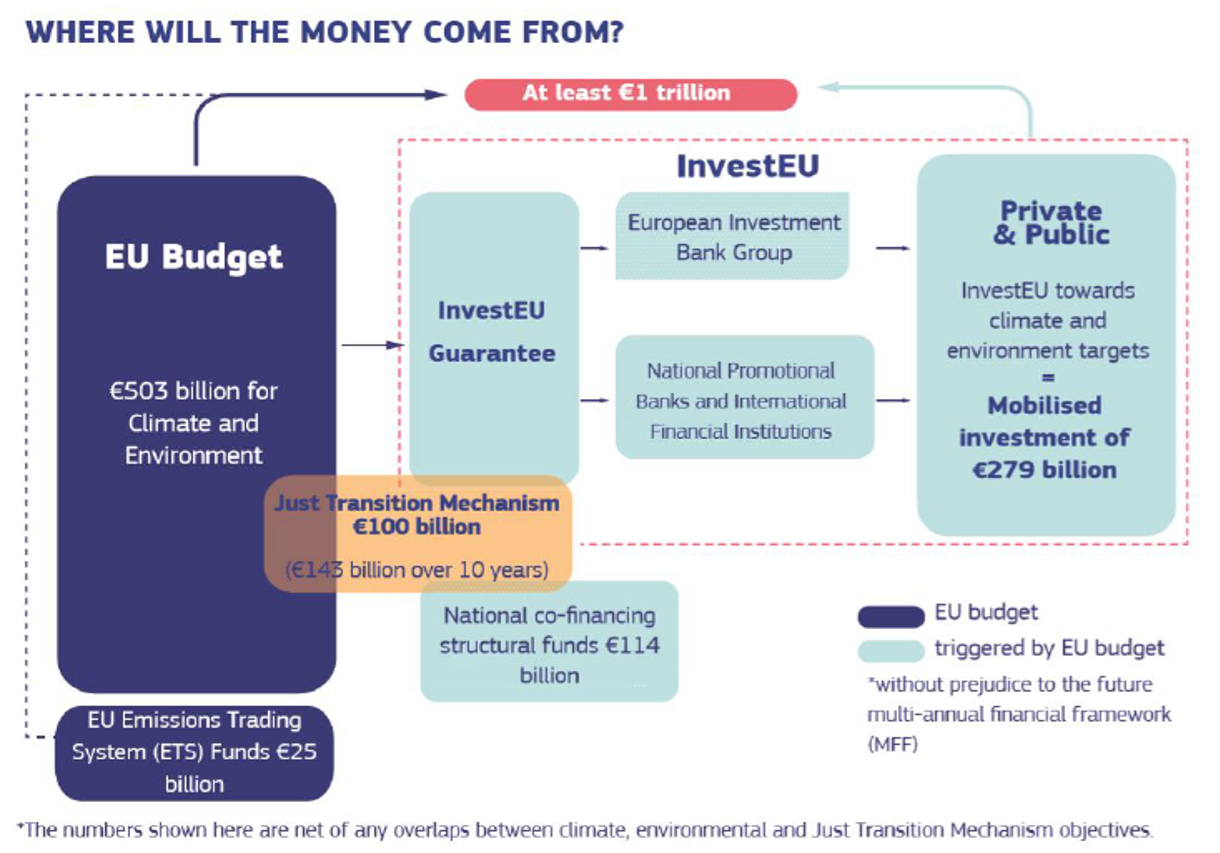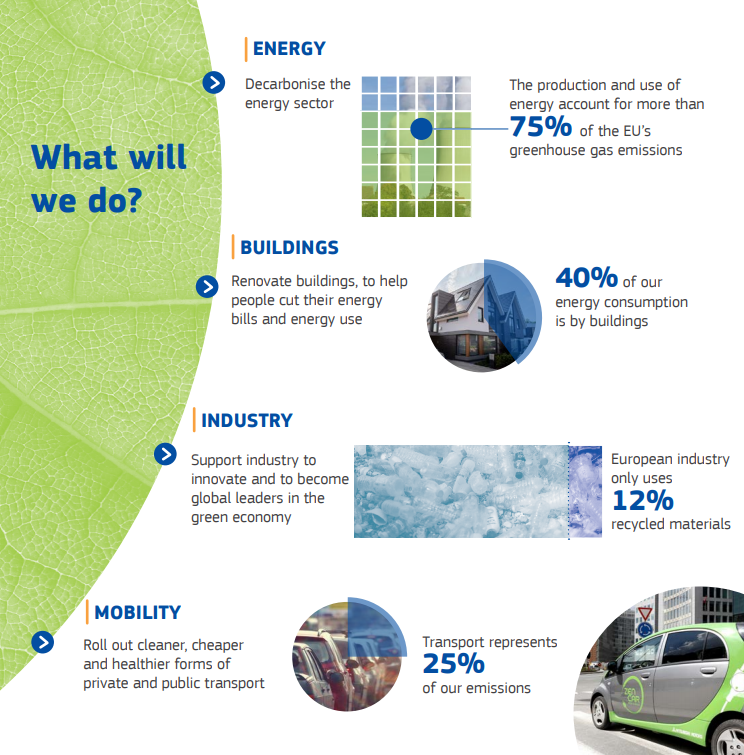Author:
Giuseppe De Stefano
Short summary:
The European Green Deal is a document published by the European Commission in 2019 to set up some macro targets and a roadmap of the key policies the European Member States need in order to achieve those targets and align with the United Nation’s 2030 Agenda. In other words it is a holistic approach to decarbonisation.

After a harsh fight, US elections certified Joe Biden as the new President of the United States of America. A couple of days before the election day, he tweeted the commitment to rejoin the Paris Climate Agreement[1] as soon as possible. The decision to leave, taken by former President Donald Trump, had been formalized just one day earlier.

That finalization had required a lot of paperwork, but was just the latest consequence of a decision taken in 2017. A decision that also broke a pact between USA and China from one year earlier (when Barack Obama was still leading the country).

Since World #1 Economic Power discontinued sustainable policies, and China is still a latecomer in this field, during the last decade the European Union has more and more become the global landmark for green policies and sustainable development. Policy makers even made a claim out of it: “Striving to be the first climate-neutral continent”.
The European Green Deal is a document published less than one year ago by the European Commission (the EU institution writing laws to be voted by the EU Parliament) that made it the #1 priority for its 2019-24 five-years-plan.[2] [3]

It is a communication, which means that it sets up some macro targets and a roadmap of the key policies the European Member States need in order to achieve those targets and to align with the United Nation’s 2030 Agenda[4] . In other words it is a holistic approach to decarbonisation.

Without interventions, in the next 30 years global population will get to consuming the amount of resources produced by three planets. Unfortunately we only have one Earth. [5] That’s why in the European Green Deal document the most advertised measure, for example, is the ambition to make Europe the first climate-neutral continent by 2050.

The document [6] is divided into four parts revealing in order and length the focus of its authors.
PART 1
TURNING AN URGENT CHALLENGE INTO A UNIQUE OPPORTUNITY
This introduction presents the wide range of policies included by this communication and tries to set up a positive tone in the face of an existential threat like the environmental crisis.
“The drivers of climate change and biodiversity loss are global and are not limited by national borders. The EU can use its influence, expertise and financial resources to mobilise its neighbours and partners to join it on a sustainable path”.

PART 2
TRANSFORMING THE EU’S ECONOMY FOR A SUSTAINABLE FUTURE
This part outlines through 2 chapters and 13 paragraphs the EU’s climate mitigation measures. Not only setting ambitious targets (i.e. from 50% greenhouse gas reduction by 2030 to climate neutrality by 2050), but also detecting where to act and invest.
Transformative policies: energy efficiency and renewables price, smart infrastructure, mobility, circular economy, digital technologies, building renovation, food value chain, biodiversity protection, pollution prevention.

Resources: €260 billion/year of joint private and public investments, partly coming from the savings and revenue streams produced by the sustainable policies themselves (e.g. plastic tax over non-recyclable packaging).
Introduction of incentive for sustainable investments and of environmental risks into the financial system. Shifting tax burden from labour to pollution.
Incentive to new sustainable technologies and digital solutions. Educational institutions re-skilling and upskilling.
And …“A green oath: ‘do not harm’”

PART 3
THE EU AS A GLOBAL LEADER
This chapter is dedicated to the EU’s ambitions and its means to act as a global leader in climate change mitigation. Such ambition is based on the political weight and diplomatical force within multilateral and bilateral international agreements and organizations. But that would not be enough: the main leverages are economical.
Although growth is projected to be slow, the EU is the largest economy in the World and the largest single market area. Coordinated action would force suppliers to comply to its sustainable standards (e.g. making Paris Agreement mandatory to validate Trade agreements), and also make Europe itself attractive for investments in sustainable industries and innovative fields.
PART 4
TIME TO ACT - TOGETHER:
A EUROPEAN CLIMATE PACT
This is the final part of the document, where it elaborates how European citizens will participate in recommended policy measures, how to engage the public, and how EU institutions, agencies and the single Member States can immediately reduce their environmental impact as entities and as employers using direct public policies to be enhanced in the so-called “Climate Pact”.

references:
[1] https://zh.wikipedia.org/wiki/%E5%B7%B4%E9%BB%8E%E5%8D%94%E5%AE%9A
[2] https://ec.europa.eu/commission/presscorner/api/files/attachment/859152/What_is_the_European_Green_Deal_en.pdf.pdf
[3] https://ec.europa.eu/info/strategy/priorities-2019-2024_en
[4] https://www.un.org/sustainabledevelopment/development-agenda/
[5] https://www.greensteps.me/library/world-nature-conservation-day-2020.php
[6] https://eur-lex.europa.eu/legal-content/EN/TXT/HTML/?uri=CELEX:52019DC0640&from=ET
[7] http://energyandclimatelaw.blogspot.com/2020/02/european-green-deal-what-is-just.html





